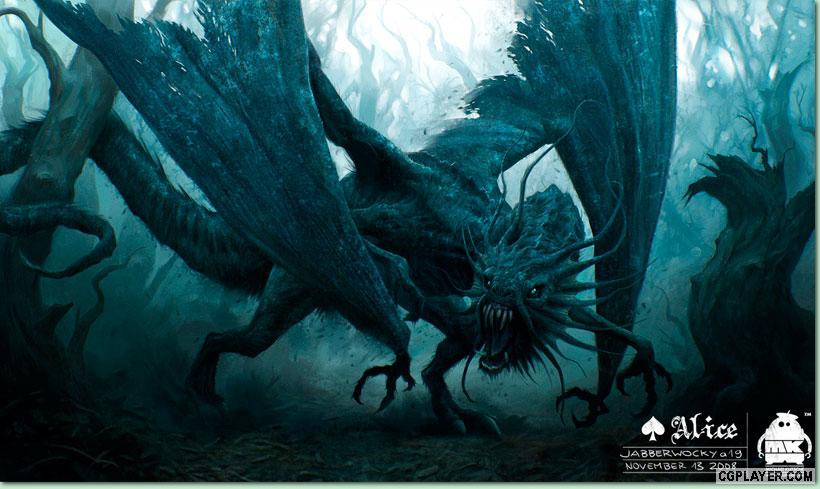
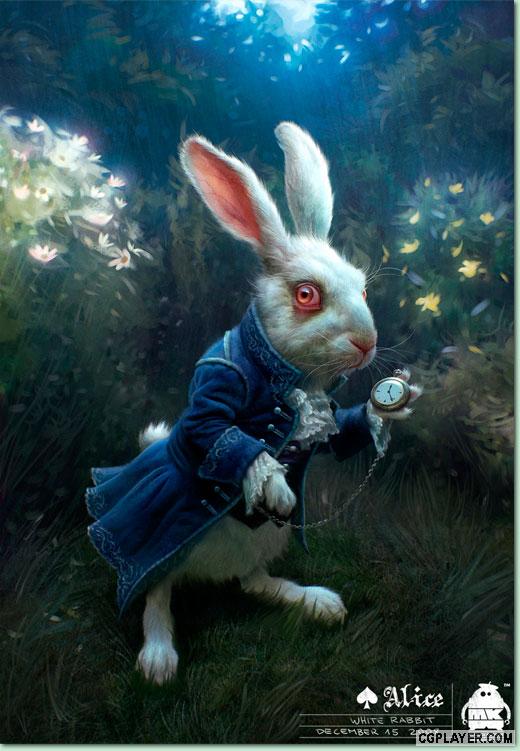
Are artists born or trained? Read about Michael Kutsche for a few minutes and you'll vote, 'born.
"I started drawing when I was four," says the talented artist. "And I was always doodling around since then, off and on. When I was 14, I guess I got serious."
Serious meant studying on his own for the most part. "I did everything art-related at home," he says. "We had a regular art class at school, but I didn't go to art school."
And yet, not long after he turned 30, the self-taught artist was designing characters for Tim Burton's 'Alice in Wonderland' from his studio in Berlin. And that commercial work has led to support for his personal work, including an upcoming exhibition at the Arludik Gallerie in Paris.
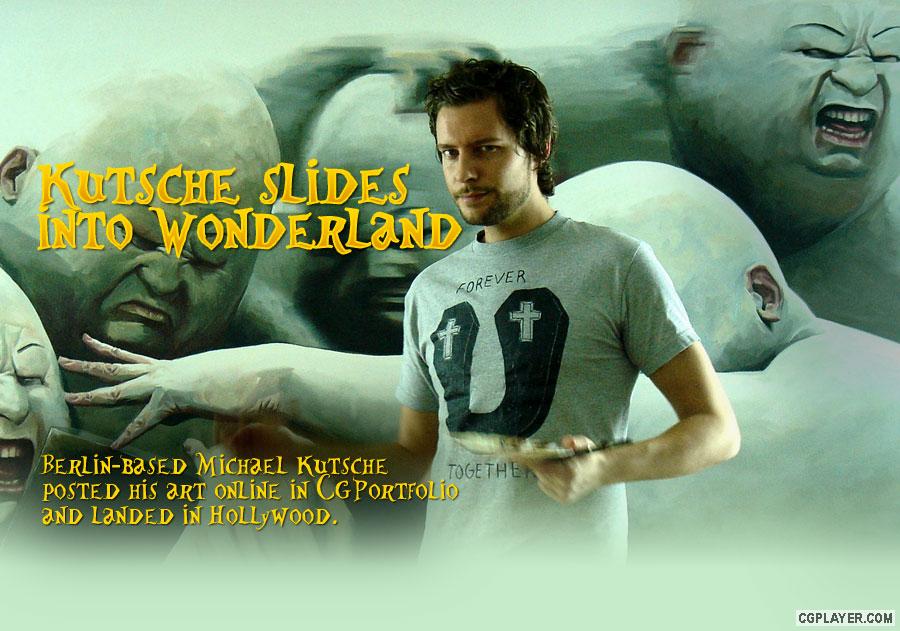
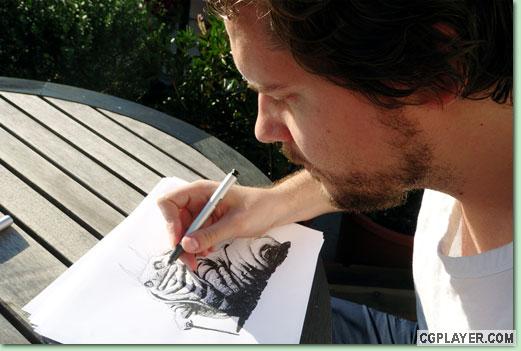
"It's amazing," Kutsche says. "I would have never thought this door would open up so suddenly for an artist in Germany. It's because of the Internet, CGSociety and this kind of community. It would have never been possible as fast before. We have all these tools. Facebook. Online printing services. You can do your own advertising online and it doesn't cost anything. You can bring out your own book. It's incredible what tools you have as an artist to market yourself."
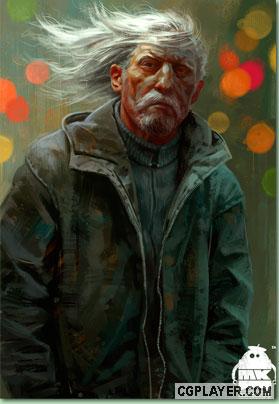
Kutsche was one of three character designers the Disney's 'Alice;' the other two were Kei Acedera and Bobby Chiu, and Imageworks discovered them through galleries of their work in CGPortfolio. The Internet has become, for concept artists and character designers, the equivalent of the stool in Schwab's drugstore, where, according to Hollywood legend, Lana Turner spun from high school student to actor.
"They had an show with the theme 'Alice in Wonderland' and they saw my artwork for the film," he says. "They offered me a chance to do a solo exhibition of watercolors and oil paintings, so I'm doing this between projects."
Since 'Alice,' Kutsche has worked on character designs for 'John Carter of Mars' and 'Thor,' and is currently involved with an unannounced project for DreamWorks Animation. It's a fast track for a self-taught artist.
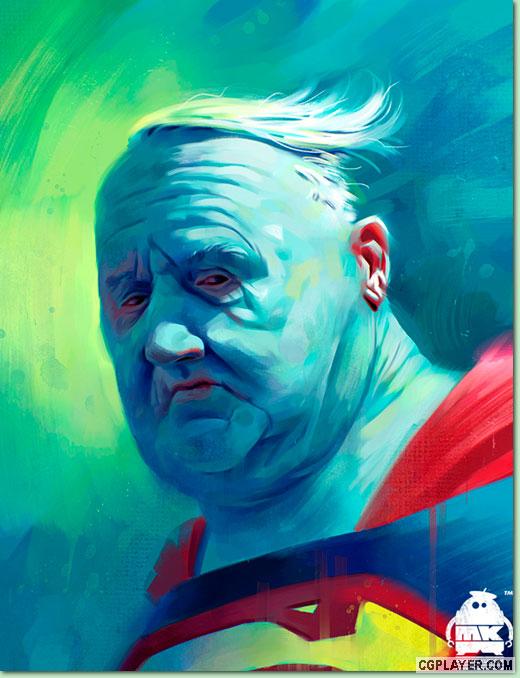
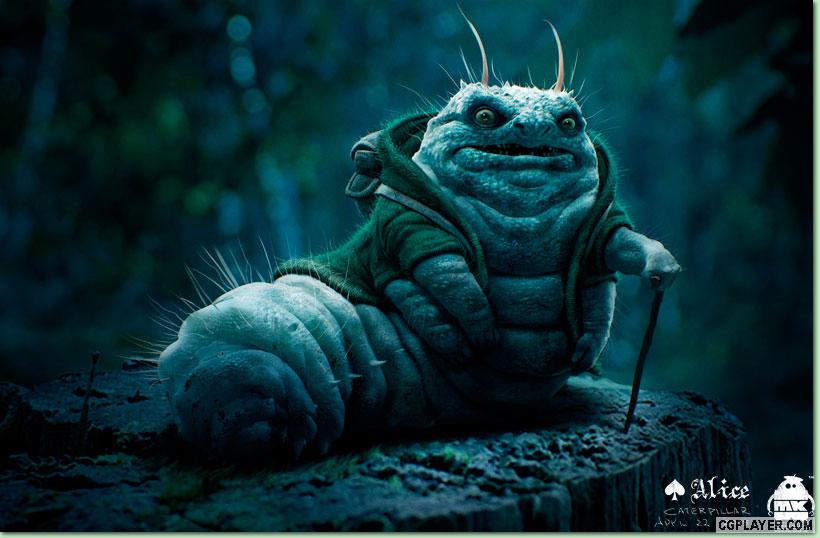
Born in Berlin in 1977, Kutsche spent his young life in Marburg, a town just north of Frankfurt. Although he didn't attend art school, his late grandfather's oil paintings hung in his house, and his father regularly took him to art museums.
"That had a big impact on me," he said. "Especially the paintings of Lucien Freud. I'd look at the paintings and try to figure out how the hell the painter did that thing. It made me feel bad at times. I'd think 'Oh my god, I'm never going to get there.'"
His father, who had trained as an architect, but worked as a programmer, had a second influence on Kutsche. "He bought me a Commodore 64 first and later, a PC," he says. "He would give me lessons in writing simple programs. I think that contact with the computer at an early age was good because it wasn't complicated for me to switch to working in digital art."
In fact, when he was 18, Kutsche landed his first job, a 'volunteership' for a small 3D studio. "They hired me because of my portfolio, which was mostly pencil drawings, but had a few 3D renderings that I had done with CorelDream 3D," he says.
That studio failed, but a new studio founded by his co-workers started up and they offered him a full-time position. "We did everything from commercials to music videos and advertising," he says.
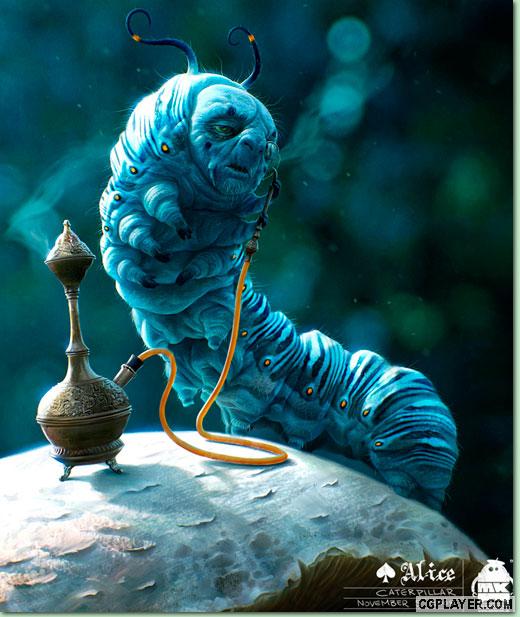
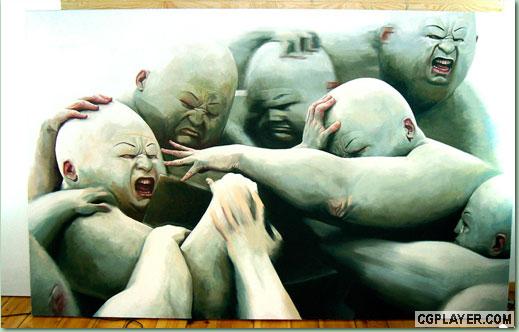
And because the studio was small, Kutsche did a little bit of everything – modeling, rigging, animation, and lighting.
Especially, lighting. "Because of my background with painting," he says, "I had a good head for colors, for making things look realistic and for making atmosphere. So they always let me do the lighting."
After five years, though, Kutsche quit to become a freelance illustrator. He realized that he wanted to work only on the ideas, the concept, rather than the entire 3D process.
When a friend of a colleague pointed him toward what became his first freelance job, creating magazine cover artwork for SEGA/The Creative Assembly's 'Total War' title, he was on his way.
"They would usually hire a 3D company to do the artwork," he says, "but they had three days and the company couldn't do it in that small time scale. So, I did something that looked 3D, but wasn't. It was a lucky situation." He would soon have a second bit of luck.
He left Frankfurt and moved to Hamburg with the woman who was to become his wife, and then in 2006, the couple moved to Berlin. "We had a huge flat and I had a studio at home, so I could do my large-scale oil paintings," he says. "It was cheap to rent space, and I loved the lifestyle in Berlin – always something going on." There, he worked for SEGA and for advertising agencies. And, he might still be doing that if not for a colleague who pushed him to put his work online.
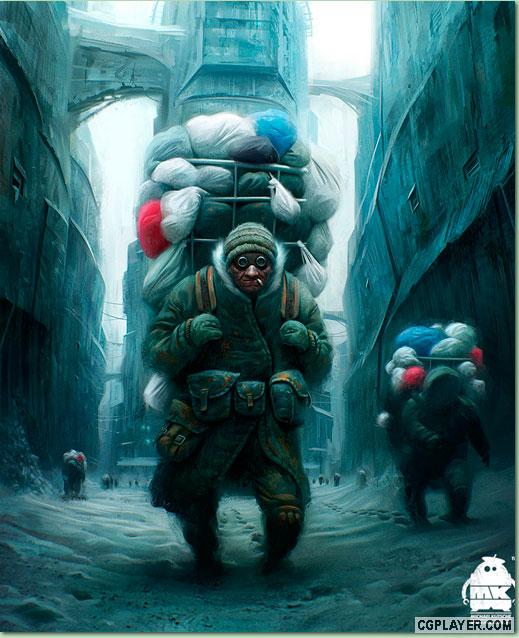
And because the studio was small, Kutsche did a little bit of everything – modeling, rigging, animation, and lighting.
Especially, lighting. "Because of my background with painting," he says, "I had a good head for colors, for making things look realistic and for making atmosphere. So they always let me do the lighting."
After five years, though, Kutsche quit to become a freelance illustrator. He realized that he wanted to work only on the ideas, the concept, rather than the entire 3D process.
When a friend of a colleague pointed him toward what became his first freelance job, creating magazine cover artwork for SEGA/The Creative Assembly's 'Total War' title, he was on his way.
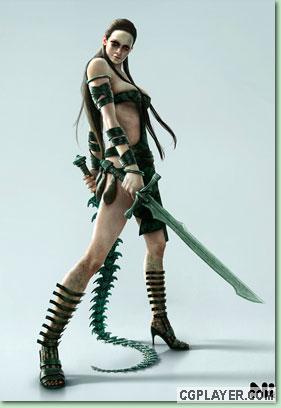
"He said, 'The CGSociety gives awards,' so I started with a Portfolio on CGSociety," he says. "From that time on, I got a lot of exposure."
That exposure led directly to an opportunity to apply for the job as a character designer for 'Alice in Wonderland.' "I got an email from Sony Pictures Imageworks," he says. "They were looking for a character designer and they had looked on CGSociety.
They said it was for a movie project, but they didn't say which movie or director." At fmx, he met with Debbie Denise, an executive vice president for Imageworks. Burton and visual effects supervisor Ken Ralston had selected his images; she offered him the job.
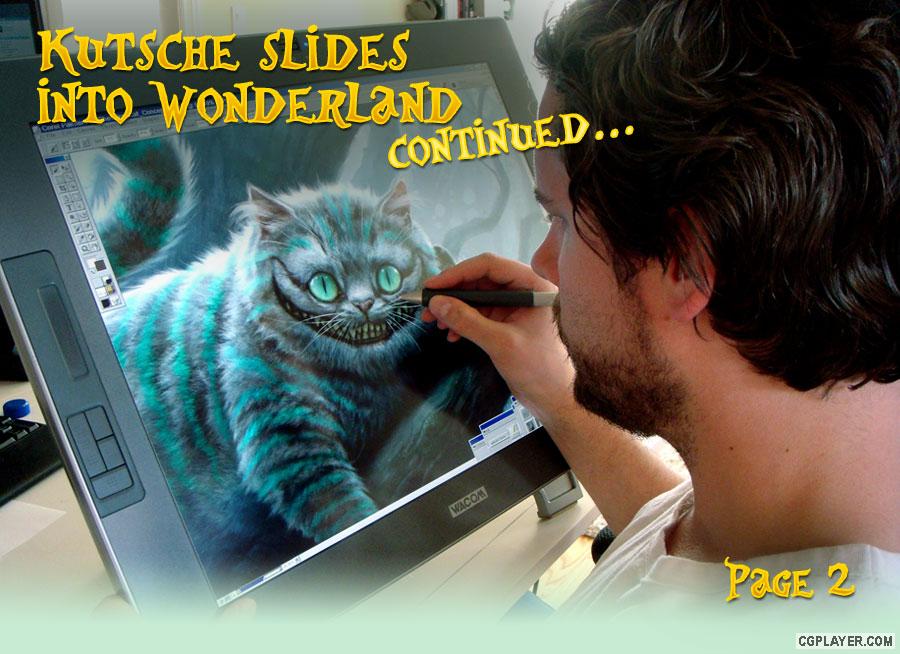
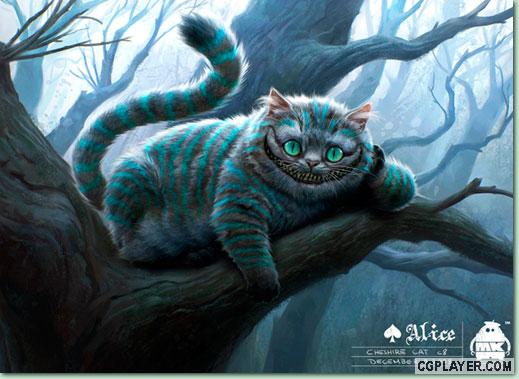
"She told me it was for 'Alice in Wonderland' and the director was Tim Burton, and I almost fainted," Kutsche says. "I'm a big fan of the work of Tim Burton. I couldn't believe it. It meant a lot. And she made me a really good offer. It wasn't like here's a guy in Germany that we don't have to pay well."
Because the film was in pre-production, there was no central location for production yet, so Kutsche worked from his Berlin studio for the first six months. Then, he asked Ralston if he could come to London and meet Burton. "Ken is such a great guy," Kutsche says. "Without him I would have been totally lost in this industry. You can easily get pushed around by people if you don't have someone like him saying, 'Let him do his work.' He was very supportive. He gave me tips and he protected my work; he gave me creative freedom."
Kutsche worked in Burton's London office for a week, flew back to Berlin, moved to Plymouth when production started, and then after the shoot, worked on set for three months in Los Angeles. He's been in California ever since.
"This wasn't like 'Avatar,'" he says of 'Alice.' "We had only a half-year for pre-production and only a year and a half for doing the shoot and the effects. And it was tough to nail down the designs, to get the final goal for each character from Tim, so that's why I was still there when they were already filming."
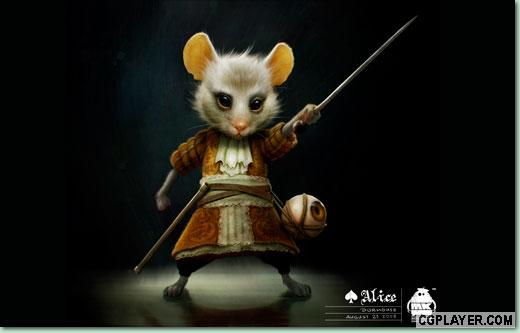
Ralston typically gave Kutsche and Chiu different characters to work on, and only occasionally would send early designs from one designer to the other to see what he'd do with it. "I didn't see a lot of Bobby's work until the end, and vice versa," Kutsche says. "It was a little weird. You'd think it wouldn't be that way because the characters had to be in the same world, but on the other side, we could be more creative. Anytime I start a new project, if some artist has done work before, I always ask not to see it. Seeing it is like an obstacle. It's in the back of your head and keeps you away from doing something original."
For 'Alice,' Kutsche worked on the dormouse, caterpillar, Red Queen, Knave of Hearts, Mad Hatter, the red and white knights, the executioner, the jabberwocky, and did the complete design of the March Hare. "I also did an early version of the white rabbit," he says. "I worked on the final version, but Bobby did the real rabbit because mine was dark and twisted in the beginning. It's more his design."
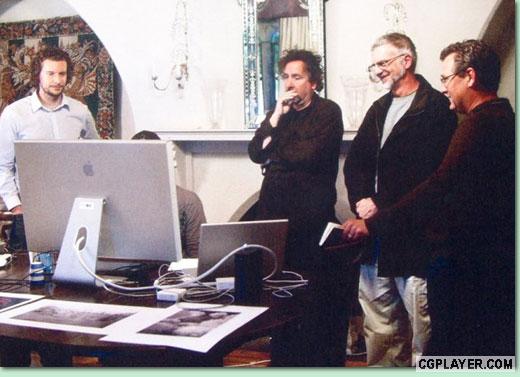
While Kutsche was still on the 'Alice' crew, Ralston opened the door for his next opportunity: A surprise introduction to Andrew Stanton, the Oscar-winning director of Disney/Pixar's 'Wall-E' and 'Finding Nemo.'
Ralston was hosting Stanton on a studio visit and suggested he meet Kutsche, who had an office in a small trailer in the parking lot. Later that day, a producer for 'John Carter of Mars,' the live-action film Stanton is directing, called and asked Kutsche to work with them. Kutsche finished 'Alice' in December, 2008 and moved to Berkeley in January to start on 'John Carter of Mars.'
"It wasn't like 'Alice,'" he says. "I was just taking some of the designs they had and giving them more personality. I often find that because it's so technical to create in 3D, the technical side of characters is more compelling than the underlying personality. It isn't like I make caricatures; I just slightly change little things. A slight proportional change from where they put a mouth, or the shape of a mouth."
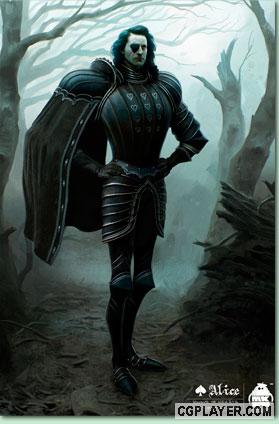
This, he explains, is one of the differences he sees between character design and comic art. "Comic artists try to work on their personal style," he says. "They're not looking at how to make something different from what they usually do."
When he finished with 'John Carter,' he and his wife moved to Venice, California and he became the character designer for Marvel Studio's 'Thor,' thanks to an art director from 'Alice.' Then, he did a little project for Sony Animation. Now, he's a freelancer at DreamWorks Animation. He doesn't want to move up the ladder into production or management at a studio; freelancing is just fine for him.


Kutsche often looks for photos of people to find characteristics he might use ? wrinkles around the eyes, interesting facial anatomy, and so forth. "I always look at a lot of reference because that creates more complex characters than when you do everything from the imagination," he says. "I can do that [create from imagination]. But, that always comes down to something you already know."
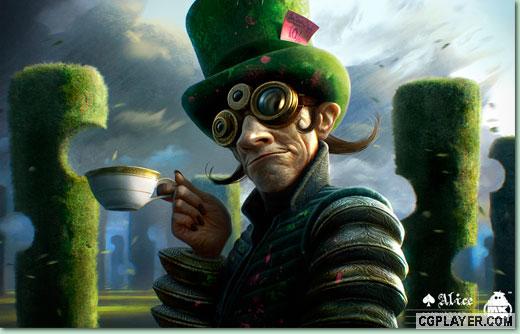
"I don't like to tell artists what to do," he says. "So production design is not the right job for me. Also, as production designer, you'd have to deal with politics. I'd rather work in a tiny group of people, be more flexible, and have more freedom. I think if I keep doing art in general and not think too big, just think about tiny things enough to support me, that's OK. I don't need to be way up there."
And that gives him time, he hopes, to continue working on his large-scale oil paintings. "I still keep thinking about fine art," he says. "The jobs I do finance my personal work."
His personal work is darker and more surreal than the art he does for hire. "For film, it's more illustration," he says. "I'm trying to get the perfect design for a particular creature and script. I have none of these restrictions when I paint."
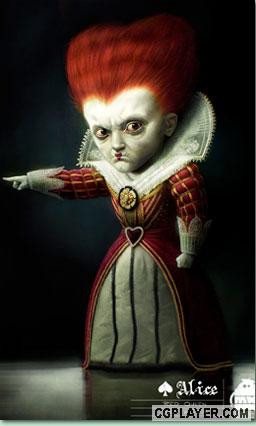
Nor does he feel restricted by what some might define as 'fine' art. I think it's easier for me to have my own style because I never went to art school," he says. "I haven't been influenced by professors or students who might say, 'That's too comic.' Sometimes the fine art students look down on illustrators, and illustrators think fine artists can't really draw. I'm in between all these different worlds."
And, it works. Recently, he sold a large oil painting, and he has the gallery show coming up. But, even if he could switch to a full-time career as a fine artist eventually, he would still consider doing character design. "If a movie came along where I thought it would be amazing to be part of it, I would do that," he says.
Someday perhaps, we'll read about Kutsche doing character design between gallery exhibitions, rather than personal work between character design projects. That would bring his world full circle, back to the amazingly talented child who couldn't stop doodling.




















